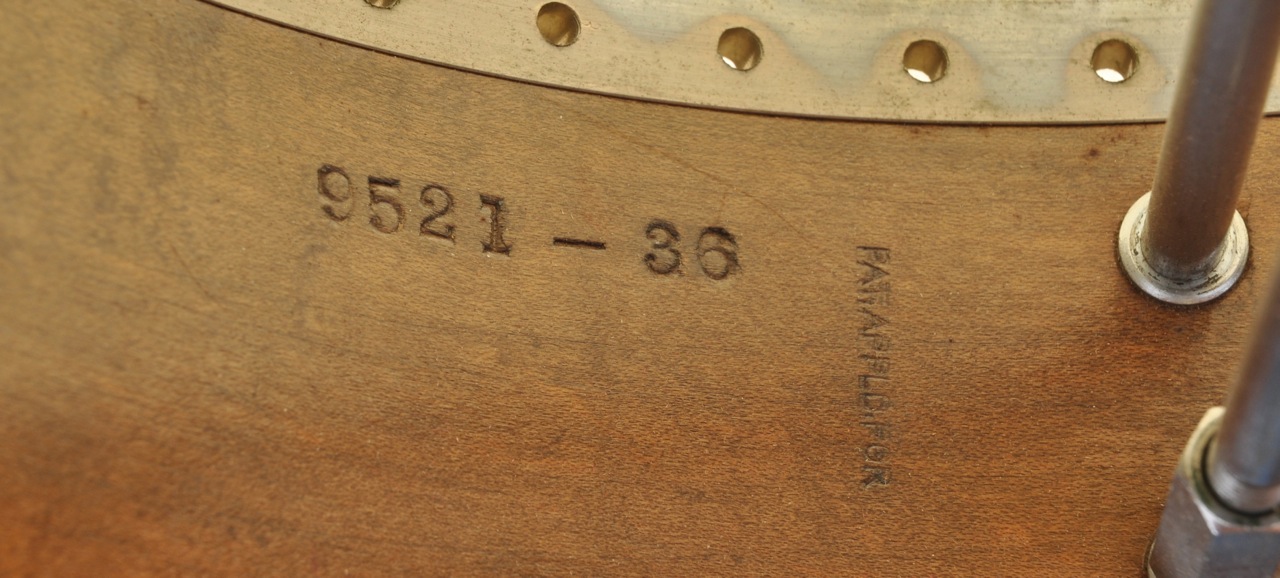Most prewar Gibson banjos are identified by a factory order number (FON) or serial number. This number guided the banjo through production and helps us identify various characteristics of the banjo such as the style and year.
1924-1938
Factory order numbers were assigned to a batch of banjos of the same style. Each banjo within this batch was then assigned a bin number, separated from the batch number by a dash. This resulted in each banjo having its own unique identification number. These numbers were stamped inside the rim and painted and/or chalked on the inside of the resonator.

1938-1940
From 1938-1940, Gibson switched from factory order numbers to serial numbers. These serial numbers incorporated a two letter prefix further identifying the brand of the banjo followed by numbers (generally four). Gibson serial numbers were stamped on the back of the peg head and chalked on the inside of the resonator.
1938
DA, DG – Gibson
DGE – Gibson Electric
DK – Kalamazoo Brand
DW – Montgomery Ward Brand
1939
EA, EG – Gibson
EGE – Gibson Electric
EK – Kalamazoo Brand
EW – Montgomery Ward Brand
1940
FA, FG – Gibson
FGE – Gibson Electric
FK – Kalamazoo Brand
FW – Montgomery Ward Brand

1940-1945
Sometime during 1940, Gibson switched back to factory order numbers, adding a single letter prefix (usually E or F) to their previous batch number/bin number format. These factory order numbers were stamped on the back of the peg head and chalked on the inside of the resonator.

Additional Information
Although most prewar Gibson banjos had an identifying number, some models did not, such as Style 11s and Style 00s. To learn more about these and all the Gibson styles, visit our styles page.
